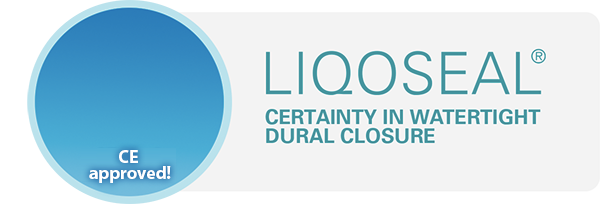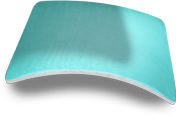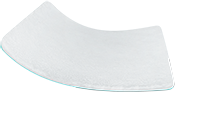Webinar: Reducing CSF leakage after cranial surgery
October 15th, 2020, Polyganics organized a webinar on reducing CSF leakage after cranial surgery. In this 1-hour webinar we shared results from our preclinical and clinical studies evaluating the performance of LIQOSEAL in reducing CSF leakage. The ENCASE clinical trials were discussed, as well as the first clinical experiences of using LIQOSEAL and recent investigational work, including a Health Economic Analysis. The webinar was moderated by Menno Germans, PhD, neurosurgeon at the University Hospital Zurich (Switzerland). Below, you can find the contribution of all speakers in this webinar.
Tristan van Doormaal, MD, PhD, Neurosurgeon at the University Hospital Zurich (Switzerland) and University Medical Center (UMC) in Utrecht (The Netherlands) and Principal Investigator of ENCASE I on pre-clinical work for LIQOSEAL
“LIQOSEAL is an evidence based dedicated sealant patch in order to achieve watertight closure after intradural surgery. The convincing data clearly underline the benefits to the unmet need seen in clinical practice.It is imperative that LIQOSEAL combines the adhesive strength of the elastic gel sealants with the ease of use of a patch. Tachosil as stand-alone hemostat with fibrin sealing capabilities does not answer the physiological requirements in sustainable closure of the dura mater”
Tristan van Doormaal: ‘This observational clinical study strongly underlines the dedicated preclinical approach: No leakage nor infection was observed within the cohort of 40 patients during the 12 months of clinical follow-up.’
Menno Germans: ‘Moreover, instant usability of the patch is reflected by its ready-to-use, easy to manipulate design and straightforward application. That is the reason why we now use it in our practice’
Tristan van Doormaal: ‘Based on these strong compelling data, ENCASE-1 study criteria were linked to real-world data extracted from 5 different hospitals in Europe and the USA. The retrospective data outcome strongly shows that current used sealants reduce infection at the site of surgery but do not contribute to reduce the CSF leakage as such! This is an important and significant finding which we submitted for publication’.
Andrew Carlson, MD, PhD Neurosurgeon at University of New Mexico –Albuquerque – USA and Principal Investigator of ENCASE II on ENCASE II:
‘The outcome of ENCASE-1, the retrospective data and the design of this multi-center randomized controlled study will further strengthen our believe that LIQOSEAL, as evidence based and dedicated dural sealant patch, will change the landscape of managing dural closure.
Emma Slot, MD, PhD Student Neurosurgery University Medical Center (UMC) in Utrecht (The Netherlands) on investigational work [1] and on a Health Economic Analysis:
The health-economic assessment on use of sealants in reducing CSF leakage performed at the UMC-Utrecht, clearly indicated that CSF leakage is directly associated with a cost increase of €10,000 per patient in our hospital setting. In addition, further lowering of healthcare costs can be seen in hospital admission time and treatments of complications as infection and meningitis. We therefore advocate the use of such dedicated sealant in all surgical cases. From a clinical perspective we potentially see future benefit in endonasal and spinal cases’





